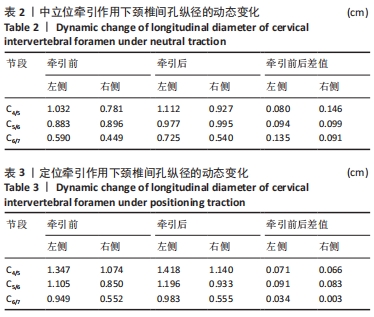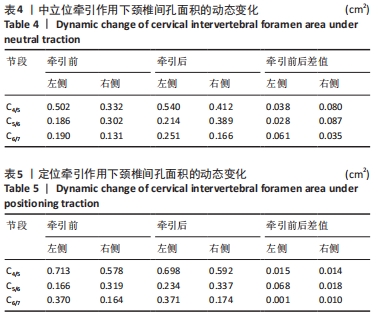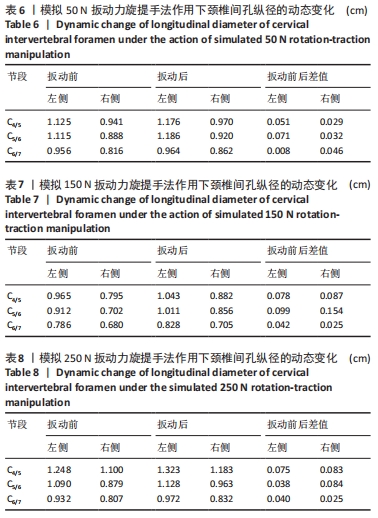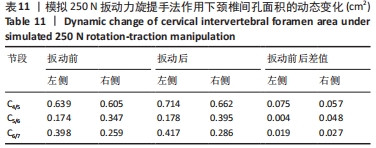| [1] |
Hong Xiao, Luo Hong, Yang Ruonan.
Comparison of dynamic hip screw and anti-rotation screw internal fixation and femoral neck system internal fixation in the treatment of Garden II-IV femoral neck fracture
[J]. Chinese Journal of Tissue Engineering Research, 2023, 27(4): 583-587.
|
| [2] |
Zhang Hui, Wang Jiayang, Wang Qian, Gan Hongquan, Wang Zhiqiang.
Effects of hyaluronic acid combined with domestic porous tantalum on chondrocyte function under the dynamic environment
[J]. Chinese Journal of Tissue Engineering Research, 2023, 27(3): 339-345.
|
| [3] |
Cheng Mingguang, Zhang Chaoyu, Zhuang Kangle, Ruan Peng, Zuo Yi, Zhou Zhengchun, Kong Xiang, Ge Jianjun, Cheng Guangcun.
In vitro construction of Stanford type A aortic dissection 3D dynamic simulation diagram and individual tissue-engineered blood vessels
[J]. Chinese Journal of Tissue Engineering Research, 2023, 27(3): 335-338.
|
| [4] |
Wang Junxiang, Sun Jiangwei, Bai Bujiafu·Yellisi, Wang Zhaoxin, Nijati·Turson.
Effect of three abutment materials on bone stress around maxillary angle implant under dynamic loading
[J]. Chinese Journal of Tissue Engineering Research, 2023, 27(3): 398-405.
|
| [5] |
Jin Tao, Liu Lin, Zhu Xiaoyan, Shi Yucong, Niu Jianxiong, Zhang Tongtong, Wu Shujin, Yang Qingshan.
Osteoarthritis and mitochondrial abnormalities
[J]. Chinese Journal of Tissue Engineering Research, 2022, 26(9): 1452-1458.
|
| [6] |
Li Huo, Wang Peng, Gao Jianming, Jiang Haoran, Lu Xiaobo, Peng Jiang.
Relationship between revascularization and internal microstructure changes in osteonecrosis of the femoral head
[J]. Chinese Journal of Tissue Engineering Research, 2022, 26(9): 1323-1328.
|
| [7] |
Song Jiawei, Yang Yongdong, Yu Xing, Yang Jizhou, Wang Fengxian, Qu Yi, Bi Lianyong.
Mid-term effect of Isobar EVO non-fusion dynamic fixation in the treatment of adjacent segment disease after lumbar fusion
[J]. Chinese Journal of Tissue Engineering Research, 2022, 26(6): 908-913.
|
| [8] |
Wang Yaoting, Lu Yan, Yao Jiaqin, Yang Chunhua, Xu Wenjing, Wang Hongyu.
Differential analysis of plantar pressure parameters of lower limbs in stroke patients with different cerebral hemispheric injuries
[J]. Chinese Journal of Tissue Engineering Research, 2022, 26(35): 5646-5651.
|
| [9] |
Li Suyao, Guo Minfang, Yu Jingwen, Meng Tao, Mu Bingtao, Li Mengdi, Li Na, Song Lijuan, Ma Cungen, Yu Jiezhong.
Effect of eriodictyol on the imbalance of mitochondrial dynamics and apoptosis in SH-SY5Y cells induced by hydrogen peroxide
[J]. Chinese Journal of Tissue Engineering Research, 2022, 26(31): 4975-4981.
|
| [10] |
Chen Weijian, Chen Zehua, Wu Jiatao, Xu Xuemeng, Du Jianping.
Imbalance of mechanical properties about bilateral shoulder and neck muscle in patients with cervical spondylotic radiculopathy using MyotonPRO
[J]. Chinese Journal of Tissue Engineering Research, 2022, 26(3): 430-434.
|
| [11] |
Wu Li, Huang Wei, Li Xuetao, Li Panpan, Zhang Kaihang, Shen Zhiyuan.
Analysis of adhesion and permeability of bone scaffold with Voronoi architecture
[J]. Chinese Journal of Tissue Engineering Research, 2022, 26(28): 4472-4476.
|
| [12] |
Qiao Qiqi, Wu Yixin, Wang Xin, Xia Zhongliang.
Effect of high-definition transcranial direct current stimulation on human dynamic balance
[J]. Chinese Journal of Tissue Engineering Research, 2022, 26(26): 4192-4198.
|
| [13] |
Zou Mengyao, Wang Junhua, Qin Pengfei, Zhong Weihua.
Knowledge graph analysis of virtual reality technology in stroke treatment
[J]. Chinese Journal of Tissue Engineering Research, 2022, 26(26): 4224-4233.
|
| [14] |
Wang Jiawei, Liu Ye.
Motor coordination: evolution of theoretical model and quantitative method
[J]. Chinese Journal of Tissue Engineering Research, 2022, 26(20): 3256-3264.
|
| [15] |
Wei Wenyue, Wang Yuyin, Guo Minfang, Zhang Jing, Gu Qingfang, Song Lijuan, Chai Zhi, Yu Jiezhong, Ma Cungen.
Fasudil inhibits neuronal apoptosis via regulating mitochondrial dynamics in APP/PS1 mice
[J]. Chinese Journal of Tissue Engineering Research, 2022, 26(2): 232-238.
|









